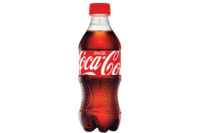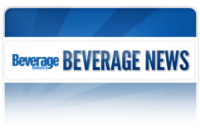Coca-Cola Consolidated Moves Into New Territory
By SARAH THEODORE
Soft drink bottlers are used to expanding into new markets, but Coca-Cola Bottling Co. Consolidated, Charlotte, N.C., is taking its business in new areas that go far beyond geography. The company, which is the second-largest Coca-Cola bottler in the United States, is developing its own technology and brands to create new business niches for itself.
Earlier this year, Coca-Cola Consolidated formed a new
company subsidiary called Beverages and Beyond Brands, or BYB, with the
intention of acquiring and licensing beverages for national distribution.
The move is significant in that it adds the title of brand owner to that of
bottler and distributor. And now, through another new subsidiary called
Swift Water Logistics, the company is rolling out a new distribution system
designed to make direct store delivery more efficient and less labor
intensive.
More than equipment
At the heart of the new system is the CooLift, a
delivery lift cart developed by Coca-Cola Consolidated that runs on CO2 and
is intended to make delivering products less strenuous. With the CooLift
system, orders are palletized prior to delivery, allowing delivery
personnel to move complete orders of product from the truck to the store at
one time, without reaching for and lifting cases to assemble orders.
But the new system includes more than just a piece of
equipment to deliver product. Coca-Cola Consolidated began looking at ways
to transform its warehouse and delivery system several years ago, according
to company President and Chief Operating Officer William Elmore. He
explains that throughout the production cycle, improvements have been made
over the years to increase speed and automation, “but from the minute
the pallet is built, everything that goes on in the warehouse and the way
you operate is like the old days,” he says. “None of that has
changed at all. We thought we ought to apply the same critical eye from the
end of the palletizer to the customer that we’ve applied from the raw
materials up to the palletizer.
“In our history in the soft drink business, we
looked at full pallets of product as finished
product,” he says. “Now it’s evolving — finished
product is when you have an order and it’s customized for an account
and it’s built and staged and put on a truck. It’s everything
you do from the back end of the palletizer to the truck that you’re
changing here.”
“We’ve applied a lot of centralization and
a lot of ‘systemsy’ stuff to our internal operations at
Consolidated,” adds Tina Fischer, president of the new Swift Water
Logistics division. “We started looking at the next step — how
do we continue to make ourselves more efficient and continue to take costs
out of the system and make this as effective a distribution system as we
can while still providing the quality and
service that our customers expect.”
The company looked at several options in use
throughout the direct store delivery system, including a cart-delivery
system that sparked the idea for the CooLift. Traditional direct store
delivery requires drivers to assemble orders for customers after they have
arrived at the retail location. With a cart-delivery system, orders are
assembled in the warehouse, specific to each retail customer, and placed on
the truck in the sequence of the delivery route.
Coca-Cola Consolidated sought to develop a cart system
that would allow it to use one cart per truck rather than one per order.
The lift was not originally based on carbon dioxide, but it proved to be a
natural choice for a company that already uses CO2 in its production
process — not to mention a cool inspiration for the CooLift name.
Because DSD orders usually are smaller than
full-pallet orders, and full pallets are too big to move through the small
aisles of convenience or drug stores, Coca-Cola Consolidated designed the
CooLift to carry half pallets that measure 18.5 inches by 37 inches. The
CooLift pallets are put together and shrinkwrapped in the warehouse and
placed in end-loaded trucks. At the retail location, the pallets are rolled
off the truck with the CooLift and checked in by the retail operator.
Delivery personnel do not actually touch the product until they are placing
it on the shelf.
According to Coca-Cola Consolidated, the process makes
it faster for retail operators to check in orders at the store, and reduces
the chance of injury to personnel from lifting product. An unexpected bonus
of the system is that the CooLift pallets are the perfect size for end-cap
displays. Future plans are to increase efficiency even more by moving
display-building activities from the retail location into the warehouse.
“We’ll build them all in the warehouse and
then you drop it in and go,” Fischer says. “You don’t
have to come in and build the displays because there is a lot of labor
involved in that.”
Unlikely partnerships
Beverage delivery traditionally has been a job for the
young and strong, but Coca-Cola Consol-idated is hoping its new
delivery system will allow the company to retain employees beyond the age
when they typically decide to move on to less strenuous jobs. This will
reduce the time and money required to train new employees, and create more
consistency with retail customers, leading to better customer
relationships, the company says.
“One of our concepts with this was to create a
more flexible workforce,” Fischer says. “You don’t have
to have a 19-year-old, six-foot-two linebacker delivering
product.”
In fact, she says, during development of the CooLift,
Fischer herself was the guinea pig. “They kept putting it through
what they started to call the Tina Test — can I push it, can I move
it around, can I control it?”
The company turned to NASCAR, another industry that is
prevalent in the Charlotte area, for expertise in making the CooLift as
lightweight and maneuverable as possible. The company found its experts in
a surprising place, a motorcycle shop with a group of technicians who had
backgrounds in the racing community. The team fine-tuned the CooLift
prototype to make it lighter and ensure that it could move through narrow
store aisles and small spaces in back rooms and coolers.
With the intention of quietly testing the system in a
local market, Coca-Cola Consolidated implemented the program in Monroe,
N.C., just outside Charlotte, about a year and a half ago. But once it was
on the streets, other distributors took notice and asked to learn more.
“As we started building
this we said, ‘We ought to patent this stuff, and at some point, this
could generate a new revenue stream for us,’” Elmore says.
“We’re in a challenging business and growth is getting hard to
come by, so you need to expand your footprint. But
you have to do it in a way that you’re leveraging what you’re
good at, your competencies. We’re good at distribution.
“Our anticipation was that we’d roll it
across our whole franchise, and at some point in the future, we’d
build out a sales force and get other people to take a look at it,“
he continues. “Well we weren’t even done with our pilot test
just outside of town here when a local beer distributor said, ‘I want
to buy that.’”
Currently, Coca-Cola Consolidated has the system
operating in about half of its business, and three beer distributors have
either begun or are gearing up for pilots in their own markets. Coca-Cola
Consolidated does not use the system for grocery or other accounts that use
bulk pallet delivery or for full-service accounts such as vending. But it
does have the potential to affect delivery to some of those accounts,
thanks to the use of end-loaded trucks that can carry whole pallets as well
as the half-pallet CooLift sizes.
“One of the biggest
components of this is not the equipment,” Fischer says.
“It’s about territory planning and routing.
“I don’t have to use specialized equipment
now,” she continues. “I can deliver anything I want. I can
deliver to a grocery store or I can start mixing loads together. That
allows us to get more geographically focused in our delivery as opposed to
channel-focused.”
Operation improvements
The new system also changes operations in the
warehouse where orders are created and
palletized for specific retail accounts.
Fischer says this brings more of the complexity
in the ordering and delivery process into the warehouse where it is less
expensive and easier to manage.
“We’re looking for 30 percent increase in
efficiency on the delivery and merchandising side, and a 10 percent
decrease in warehouse efficiency, because now you’re building those
orders in the warehouse instead of building them on the street,”
Fischer says. “That’s rapidly coming down because as
they’re getting used to it [in the warehouse] and they’re
finding ways to make themselves more efficient, they’re getting their
cases-per-man hour back up. Overall, it’s still a huge
win.”
Because the work is less labor-intensive, Coca-Cola
Consolidated has revised its delivery schedule to a six-day schedule that
has delivery personnel working longer days, four days a week, with three
days off during the week.
“If you think about how hectic life is today and
all of a sudden you have a weekday off and you can go to a doctor’s
appointment or a teacher’s conference or the car’s got to go to
the shop … all the stuff we deal with, now you’re really a
preferred employer,” Elmore says. “So the work is less
demanding and you’ve got personal life flexibility you didn’t
have before.
“This is one of those win-win-wins,” he
says. “You get out of the customer’s store faster, so
it’s better for them. The amount of productivity you can get out of a
route goes up, so we win, and the quality of the work life for the employee
is greatly improved.”
Branching out
Swift Water Logistics is just one of Coca-Cola
Bottling Co. Consolidated’s recent expansions into areas other than
bottling and distribution. The company launched Beverages and Beyond Brands
(BYB) early this year, with Cinnabon dairy-based coffee drinks and Respect
fruit-flavored drinks. Both products were created by Brain Twist, New York,
and acquired by Coca-Cola Consolidated for possible distribution throughout
the United States.
Several years ago, the company also created Data
Ventures, which specializes in revenue management and best practices.
Coca-Cola Consolidated President and Chief Operating
Officer William Elmore says the company values innovation and realized it
had the opportunity to profit from its innovations beyond the improvements
to its own operations. He says each of these ventures is tied to a core
area of competency for Coca-Cola Consolidated and the company has no
intention of abandoning its primary business.
“What this is all about is strengthening our
financial position so we can continue to be, the best bottler we can
be,” he says. “While these things are exciting, fundamentally,
we are and will always continue to be, first and foremost, a Coca-Cola
bottler. All these other businesses exist to support that.”

